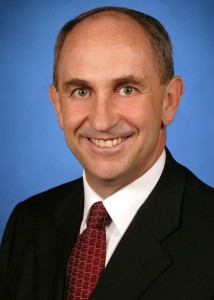In the future, General Motors expects to hold capital spending steady from year to year and to avoid dramatic peaks and equally dramatic valleys.
“We want to eliminate the big swings in capital spending,” GM Vice Chairman and Chief Financial Officer Chris Liddell said.
Over the years, capital spending has been reduced dramatically and many projects cancelled during recessions, he said. “But that’s enormously expensive,” he added. “A lot of money was wasted,” he said.
(GM now struggling with bankruptcy-related product delays. Click Here for the story.)
It’s better in the long run for GM to hold capital spending steady during both good times and bad, he said. “You have to have control of spending,” stressed Liddell, who joined GM after serving as Microsoft’s CFO.
 Stronger finances, he asserted, will enable GM to hold capital spending level during a downturn. And, as General Motors enters 2011, its finances are steadily improving –though the company still faces challenges, GM’s top financial officer said Tuesday.
Stronger finances, he asserted, will enable GM to hold capital spending level during a downturn. And, as General Motors enters 2011, its finances are steadily improving –though the company still faces challenges, GM’s top financial officer said Tuesday.
“We have a strong balance sheet and $5 billion revolver,” Liddell said. But GM still must move ahead with plans to reduce remaining debt and fully fund the company’s chronically underfunded pension fund.
“This is not an industry that lends itself to debt,” said Liddell, who noted that for most of its history GM was basically debt free. “If you look at GM historically it was an investment grade company. “It only became highly leveraged” in the last 15 or 20 years, Liddell observed
One of GM’s major financial objectives is to restore the company’s investment grade credit rating, Liddell told a small group of reporters. GM is retiring its remaining debt, he added.
“I don’t think we’re that far from investment grade. But the rating agencies have different ideas. They will want to see a consistent” performance from GM in the future.

